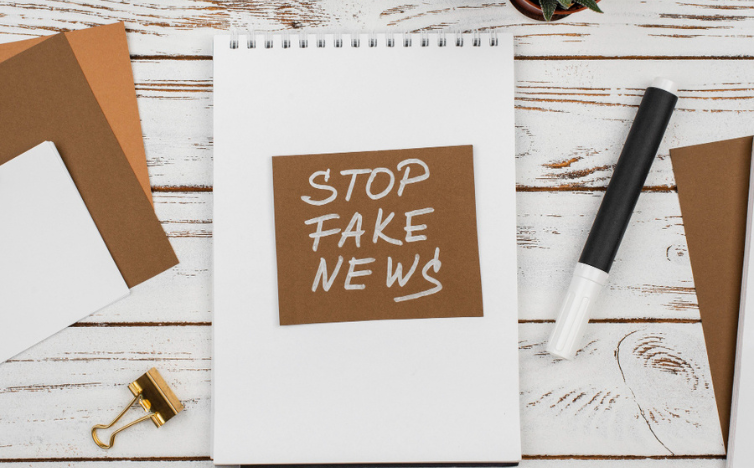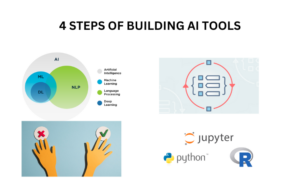For people who use the internet a lot, telling what’s true and what’s not can feel like trying to find your way out of a maze with no end. On social media, there’s so much information coming at us so fast that it’s hard to understand it all. Because of this, fake news and wrong information spread really quickly, which is dangerous. It can leave people feeling confused, less knowledgeable, and divided. But in the middle of all this chaos, there’s something unexpected that can help.
In this post, I reveal the new ways AI is fighting fake news, making sure online conversations are honest and the information we get is trustworthy and shapes how we see the world.
Table of Contents
The Anatomy of Misinformation
Before we talk about how AI can help fix things, let’s look at what misinformation really is. It’s not just a lie; it’s a complicated web of stories made on purpose to trick, confuse, or control people. It’s everywhere on social media, used to take advantage of how people think and how fast things spread online.

The Proliferation Pathways
Misinformation is really powerful when it looks and sounds like real news. It starts on fake news websites but spreads quickly on social media when people share, like, and retweet it. The computer programs that decide what to show people online often pick these fake stories because they get a lot of attention, even if they’re not true.
The Cognitive Pitfalls
Inaccurate information gains more effectiveness due to the vulnerability of humans. People are capable of believing and spreading false information that fits with their preexisting ideas, interests, and experiences due to the novelty bias, snowball effect, and confirmation bias.
AI as the Decider of Truth
AI, with its strong ability to analyze information, is in a good position to fight misinformation by sorting through all the online confusion to find the small bits of truth.
The Algorithmic Guardians
AI’s way of defending against misinformation is to quickly go through huge amounts of information, something even the most dedicated human fact-checker couldn’t do. AI can find patterns and strange things, figure out if pictures or videos are fake, and look at the details of language to see if something might not be true.
The Fusion of Data Sources
AI platforms mix together information from lots of different places like newspapers, social media, and picture libraries. This helps the AI understand where things come from and if they’re true. By combining all this information, the AI can see where things started and how they spread, giving a good idea of how important they might be.
Machine Learning and Natural Language Processing
With machine learning, AI tools get better as they see more information, making their way of finding fake things more accurate. They can also learn to predict and stop new tricks that people use to spread misinformation. Also, AI can understand and make sense of text almost as well as people can, which is really impressive.
The Ethical Conundrums
Although AI is helpful in fighting misinformation, it also brings up questions about what’s right and wrong and has things it can’t do.

The Automation Debate
The quick use of technology to control content has started arguments about whether it’s more important to let people say what they want or to stop things that might be true but don’t match what most people think.
Bias and the Learning Curve
AI systems can accidentally keep unfair ideas from their training information. When they learn from old information, they might make unfair ideas even stronger, even though they’re supposed to be fair.
Accountability in the Age of AI
Using AI tools to find and stop fake news brings up big questions about who should be responsible. Who is in charge of making sure AI works well and doesn’t cause problems? And what can people do if AI makes mistakes and says something is fake when it’s not?
Check Also: 10 Best AI Tools For Social Media Management
AI in Action: Success Stories
Even though there are challenges, AI’s efforts to fight misinformation are working, and many platforms are using new ideas to stop fake news from spreading.
Content Integrity Solutions
Big social media companies use AI to find and mark things that seem strange, like deepfake videos and edited pictures. They also work with groups that check facts to give more information and warning signs for things that might not be true.
Proactive Inoculation
To stop fake news from spreading quickly, websites use AI to guess which things might cause problems and stop them before they get popular. This helps protect online groups from believing things that aren’t true.
User Empowerment Features
AI is not solely the province of tech companies; user-facing tools have also benefitted from AI’s capabilities. Browser extensions and news aggregators employ AI to rank content by veracity and credibility, allowing users to make informed decisions about the information they consume and share.
The Future of AI in Fighting Misinformation
As AI gets better, it will become a normal and important part of being online. Technology keeps getting better, and people are really focused on making sure things are right. This means that in the future, AI won’t just stop fake things online; it will also help make sure that what people see and know is true in a world full of information.
Check Also: Future of AI in Social Media
Final Thoughts
The fight against fake news is like fighting on many fronts, and AI helps stop the flood of wrong information. While we work out the right way to use AI and make it better, one thing is clear: AI can be a big help in making sure what we know is true. But we need to use it carefully, with rules about what’s right and wrong, and people watching to make sure things go well. If we also work together to teach people how to know what’s true, AI can help make society smarter and more connected. In a world where it’s hard to tell what’s real, AI’s job to find the truth isn’t just about technology; it’s about doing what’s right. It’s tough, but making sure what we say online is real is worth it.
FAQS
How do AI tools spot fake news?
AI tools use advanced algorithms to analyze patterns and characteristics of news content. They can identify suspicious patterns, such as unusual sources or language, that suggest misinformation.
Do AI tools only detect fake news after it’s been posted?
Not necessarily. Many AI systems are equipped with predictive capabilities, helps them predict and warn about fake news before it becomes a big problem.This way of doing things helps stop fake news from spreading quickly.
Can AI tools distinguish between different types of misinformation?
Yes, AI tools are designed to detect various forms of misinformation, including false information, manipulated media (such as deepfakes), and misleading claims. They employ different techniques and models tailored to each type of misinformation.
How accurate are AI tools in identifying fake news?
While no system is perfect, AI tools have shown significant effectiveness in detecting fake news. They continuously learn and improve from vast datasets, making them increasingly adept at identifying and flagging misleading content.
Do AI tools consider context when assessing content?
Yes, many AI systems take context into account when evaluating content. They analyze factors such as the source’s credibility, the language used, and the historical spread of similar information to provide a more nuanced assessment.
What actions can AI tools take to prevent the spread of fake news?
AI tools can do different things to stop fake news, like checking content, showing warnings, or not letting suspicious things go too far. Some websites also use AI to suggest good sources or check if things are true for users.




